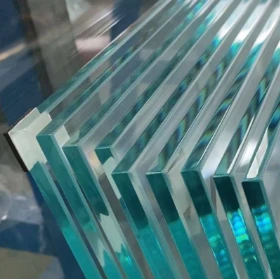

Understanding Dual Low-E Glass Benefits and Applications
In the modern construction landscape, energy efficiency has emerged as a pivotal concern for architects, builders, and homeowners alike. Among the various innovations in building materials, dual low-emissivity (Low-E) glass has gained significant attention. This specialized type of glass is designed to enhance energy conservation while providing superior comfort and aesthetic appeal.
What is Dual Low-E Glass?
Dual low-E glass refers to a type of insulated glass unit (IGU) that is coated with two layers of low-emissivity materials on its inner surfaces. These coatings are microscopically thin and are designed to reflect infrared radiation while allowing visible light to pass through. The primary purpose of low-E coatings is to reduce the amount of heat that escapes during colder months and minimize solar heat gain during warmer months. By incorporating two low-E layers, dual low-E glass optimizes insulation performance, striking a balance between energy efficiency and natural light admission.
Energy Efficiency
One of the most significant advantages of dual low-E glass is its remarkable energy efficiency. During winter, the low-E coatings reflect heat back into the building, reducing the need for heating systems and consequently lowering energy bills. Meanwhile, in the summer, these coatings help block excess solar heat, leading to decreased reliance on air conditioning. This dual action helps maintain a consistent indoor temperature throughout the year, enhancing overall comfort for occupants.
Studies have shown that buildings equipped with dual low-E glass can reduce energy costs by up to 30% when compared to traditional single-pane windows. This substantial reduction is not only beneficial for homeowners in terms of savings but also contributes to broader environmental goals by decreasing energy consumption and greenhouse gas emissions.

Comfort and UV Protection
Beyond energy savings, dual low-E glass provides enhanced comfort in living spaces. The coatings reduce glare and help maintain a balanced light level, creating a more inviting atmosphere. Furthermore, this type of glass offers excellent protection against harmful UV rays, which can cause fading of furniture, flooring, and artwork. By filtering out up to 99% of UV radiation, dual low-E glass helps preserve the integrity of interior spaces, making it a practical choice for residential and commercial properties alike.
Applications in Architecture
As the demand for sustainable building practices continues to rise, dual low-E glass has become a popular choice among architects and builders. It can be utilized in a variety of applications, ranging from residential homes to commercial buildings, schools, and hospitals. Its versatility allows for incorporation in windows, glass doors, curtain walls, and skylights, providing architects with creative freedom while promoting energy efficiency.
When designing new structures or renovating existing ones, the choice of glazing can significantly impact both energy performance and aesthetic appeal. Dual low-E glass enables architects to create expansive glass facades that enhance natural light while maintaining thermal comfort.
Conclusion
In summary, dual low-E glass is a vital innovation in energy-efficient building materials. Its unique dual-layer design offers substantial benefits, including improved insulation, reduced energy costs, enhanced comfort, and protection from UV rays. As society shifts towards more sustainable living practices, the role of dual low-E glass in architecture and construction will undoubtedly continue to grow. By investing in such advanced materials, we can create buildings that are not only functional but also environmentally responsible, paving the way for a greener future.